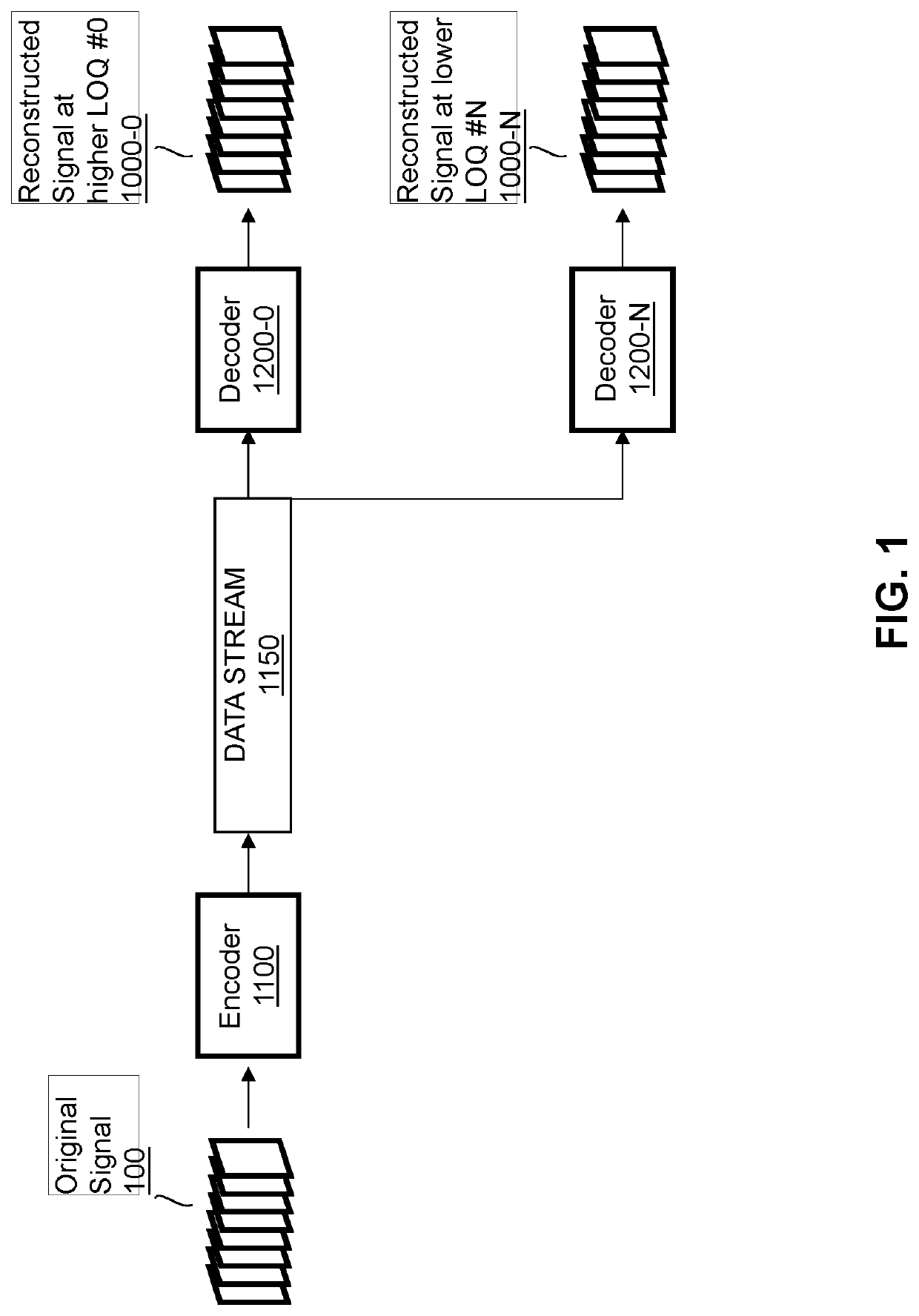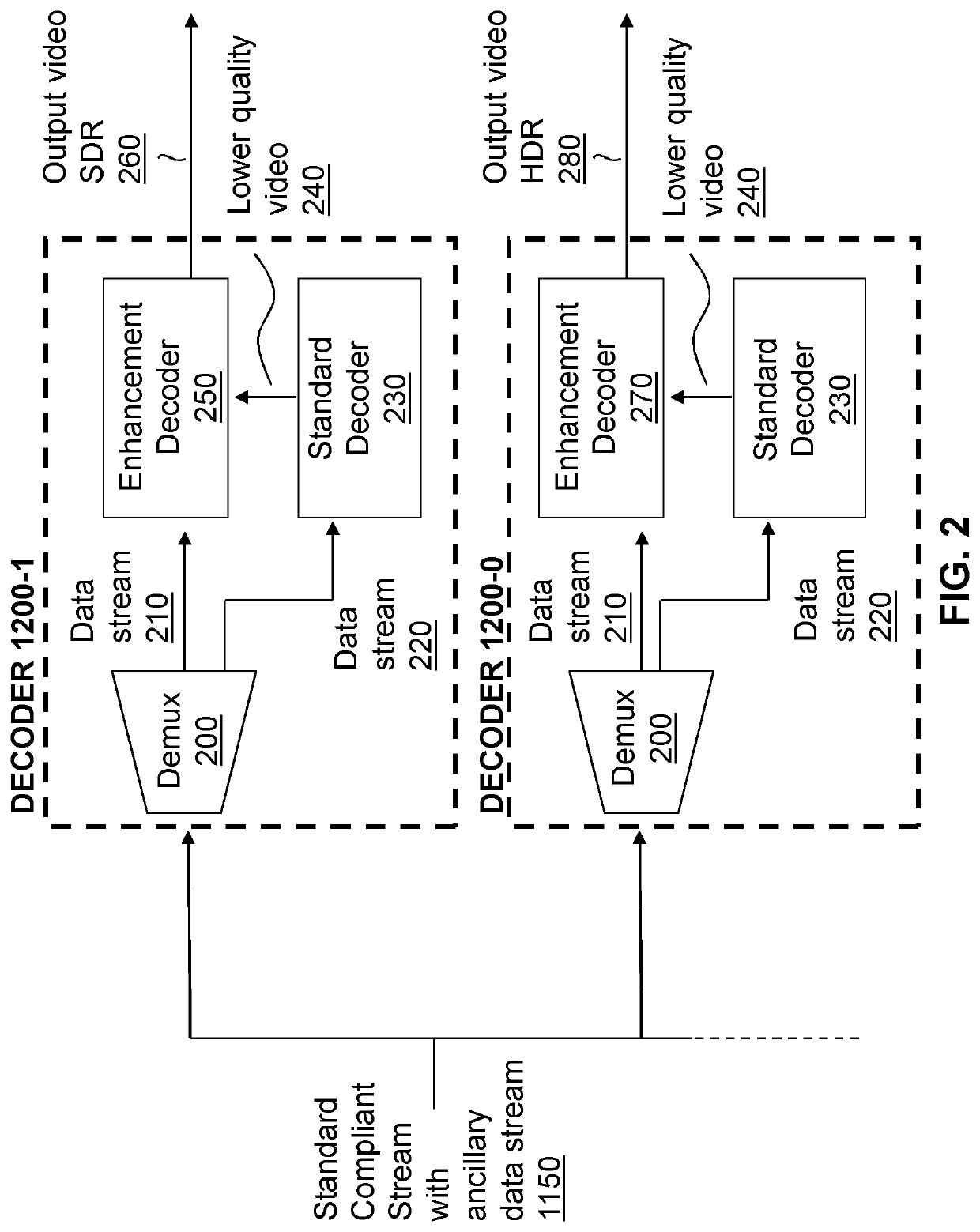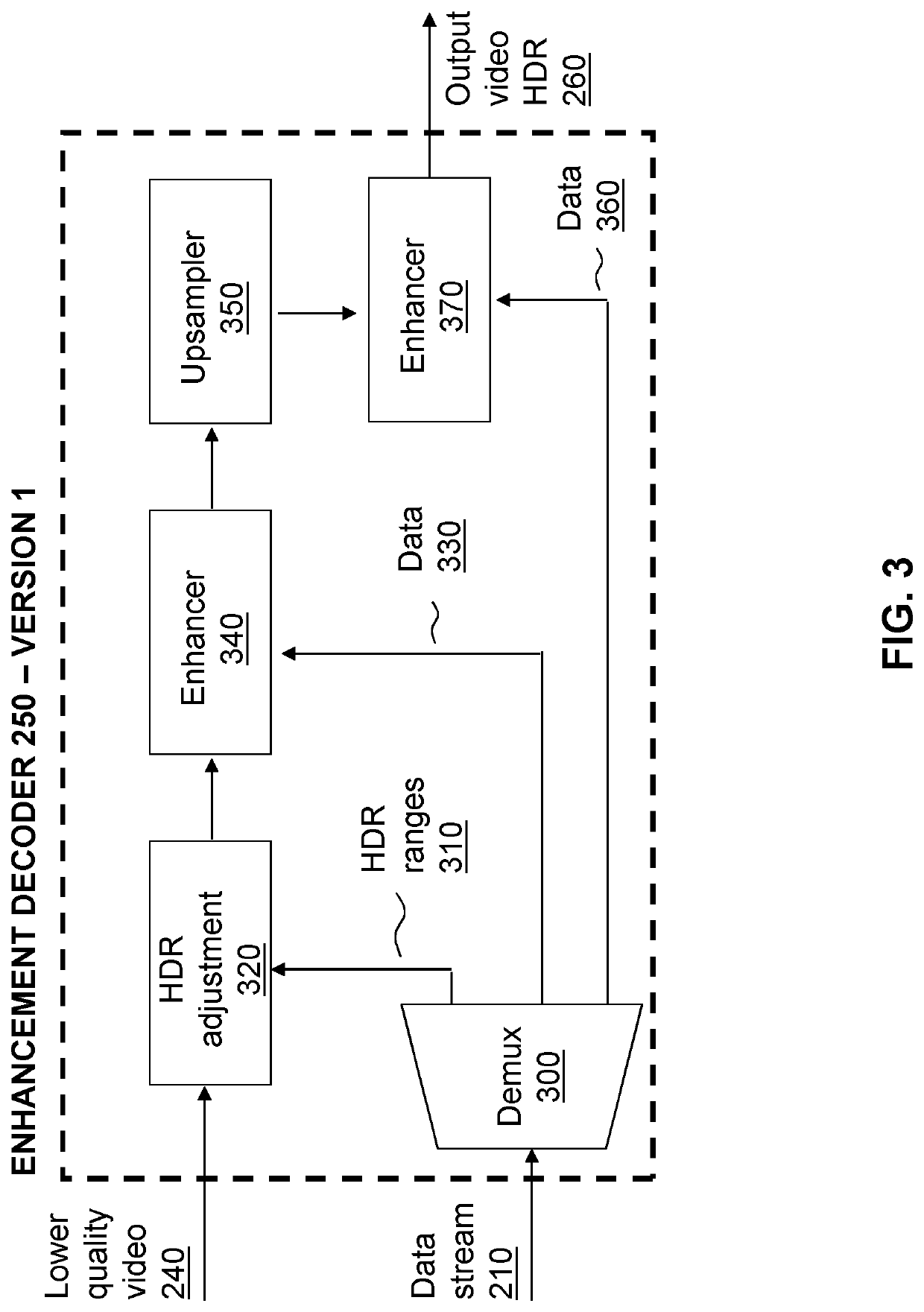Enhancement decoder for video signals with multi-level enhancement and coding format adjustment
a decoder and video signal technology, applied in the field of signals processing methods, can solve the problems of increasing the cost of content distributors, increasing the cost of content creators and distributors, and affecting the adoption of newer and better technologies, and achieve the effect of more elegant and efficient methods
- Summary
- Abstract
- Description
- Claims
- Application Information
AI Technical Summary
Benefits of technology
Problems solved by technology
Method used
Image
Examples
Embodiment Construction
[0050]Some definitions are given below to aid the reader of this document in relation to the terminology used.
[0051]As non-limiting examples, a signal can be an image, an audio signal, a multi-channel audio signal, a video signal, a multi-view video signal (e.g., 3D video), a volumetric signal (e.g., medical imaging, scientific imaging, holographic imaging, etc.), a volumetric video signal, or even signals with more than four dimensions.
[0052]Broadly speaking, video is defined as the recording, reproducing, or broadcasting of moving images. A video signal consists of a sequence of individual frames, each of which may be individually compressed through encoding / decoding methods.
[0053]Encoding is a process that involves converting information from one format into another format to allow efficient transmission from one source to another, or storage of that information. The information to be encoded may be raw video, which often contains large amounts of data that cannot be feasibly tra...
PUM
 Login to View More
Login to View More Abstract
Description
Claims
Application Information
 Login to View More
Login to View More - R&D
- Intellectual Property
- Life Sciences
- Materials
- Tech Scout
- Unparalleled Data Quality
- Higher Quality Content
- 60% Fewer Hallucinations
Browse by: Latest US Patents, China's latest patents, Technical Efficacy Thesaurus, Application Domain, Technology Topic, Popular Technical Reports.
© 2025 PatSnap. All rights reserved.Legal|Privacy policy|Modern Slavery Act Transparency Statement|Sitemap|About US| Contact US: help@patsnap.com



